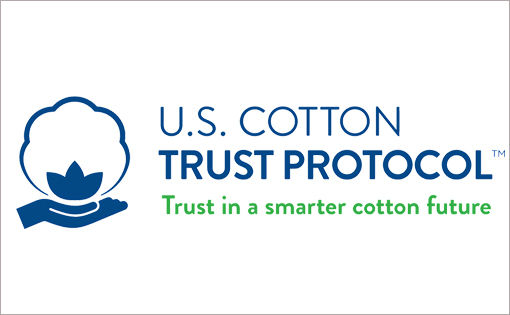Arguably, business as usual in the fashion industry is not sustainable. The industry produces 8 percent of global greenhouse gas emissions while generating 1-1.5 percent of global GDP. Were the fashion industry to continue along this path, it would consume more than a quarter of the total carbon budget that is necessary to limit climate change to 2 degrees Celsius (or 3.6 degrees Fahrenheit) by 2050.
Fashion, retail and textile players widely recognize the need to disrupt the status quo. In a recent study by the Economist Intelligence Unit and the U.S. Cotton Trust Protocol, 60 percent of executives picked sustainability as a top strategic priority for their organization. "Sustainability is of great importance to the apparel industry and critical for our long-term success," said Tara Luckman, the CEO of Flourish CSR and advisor to the U.S. Cotton Trust Protocol. "We recognize that for the industry, as a whole, achieving sustainability can be a process and that change will not be immediate."
The research dives into the environmental programs and sustainability hurdles in the industry through a survey of 150 insiders and in-depth interviews with 11 executives from leading brands including H&M, Puma, Zalando, Adidas and VF Corporation, which owns The North Face, Timberland and Vans.
The most common measure that executives are taking is to better understand the nature of their supply chains. The most popular steps include developing a sustainability strategy with measurable targets, which 58 percent of respondents are doing, and collecting data from across the supply chain to track sustainability performance, which 53 percent are employing. But sustainability efforts have been challenging due to a lack of a shared systems of measurement to track progress.
In the drive to be more sustainable, the availability, quality and comparability of data has become an obstacle. Without complete visibility over every stage of the supply chain-many of which cross continents, cultures and codes of ethics-it is impossible to measure the sustainability of a garment.
Brands with the most success implementing their sustainability agenda all reported a common trait: they have spent time and money understanding the environmental impact of their supply chain. Many of the firms that made the earliest commitments to sustainability, such as H&M and Nike, were forced to do their own data collection, as no third-party efforts were available. Interviewees said that not only do brands need to ramp up data collection efforts, but they also require a set of standard methodologies for collecting data.
"A shared sustainability standard should in theory guide the industry to an aligned approach for collecting supply chain data," said Dr. Gary Adams, the President of the U.S. Cotton Trust Protocol. "However, it can be incredibly challenging to obtain the correct figures from suppliers. It can feel like every organization is using different methodologies, different tools and that makes it hard to compare results and determine what we can achieve, but that's a problem we're trying to solve with the Trust Protocol."
Despite facing difficulties, respondents were broadly optimistic that the industry is getting closer to aligning on a consistent way to measure the sustainability of their supply chain based on the attitudes of younger shoppers and the introduction of sustainability legislation. Seventy-three percent of respondents said global standards and certifications are good starting points toward sustainability.

The U.S. Cotton Trust Protocol is a new system for more sustainably grown cotton, which fills the farm-level data gaps that brands and retailers have struggled to access in their efforts to be more sustainable. In joining the U.S. Cotton Trust Protocol, members can prove, measure and verify that the cotton fiber element of their supply chain is more sustainably grown with lower environmental and social risk.
The Trust Protocol employs a mass balance record keeping and audit system. At the gin, a unique credit for each kilogram of cotton ginned is issued. When the cotton is consumed by a brand or retailer, the credits are transferred along with the cotton to its new owner. Importantly, each credit is tied to a bale's permanent bale identification (PBI) number, enabling full transparency throughout the supply chain.
Through quantifiable and verifiable goals and measurement, the Trust Protocol can drive continuous improvement in sustainable cotton production in six key sustainability metrics: land use, soil carbon, water management, soil loss, greenhouse gas emissions and energy efficiency. Brands and retailers can use these data points to show progress against their committed pledges and goals. Enrolling in the Trust Protocol can help brands and retailers receive the data they need to ensure that the cotton fiber element of their supply chain is sustainably grown.
The system gives evidence to the sustainability credentials that are proven via Field to Market: The Alliance for Sustainable Agriculture, measured via the Field Calculator and verified with Control Union Certifications. The Trust Protocol is aligned with existing sustainability programs including the U.N. Sustainable Development Goals and is included on Textile Exchange's list of preferred fibers.
New sustainability systems including The U.S. Cotton Trust Protocol can help the global apparel industry continuously improve its sustainability, better understand the elements of its worldwide supply chain, and lessen its impact on the planet through better data.
Click here to learn more about the U.S. Cotton Trust Protocol.










Comments